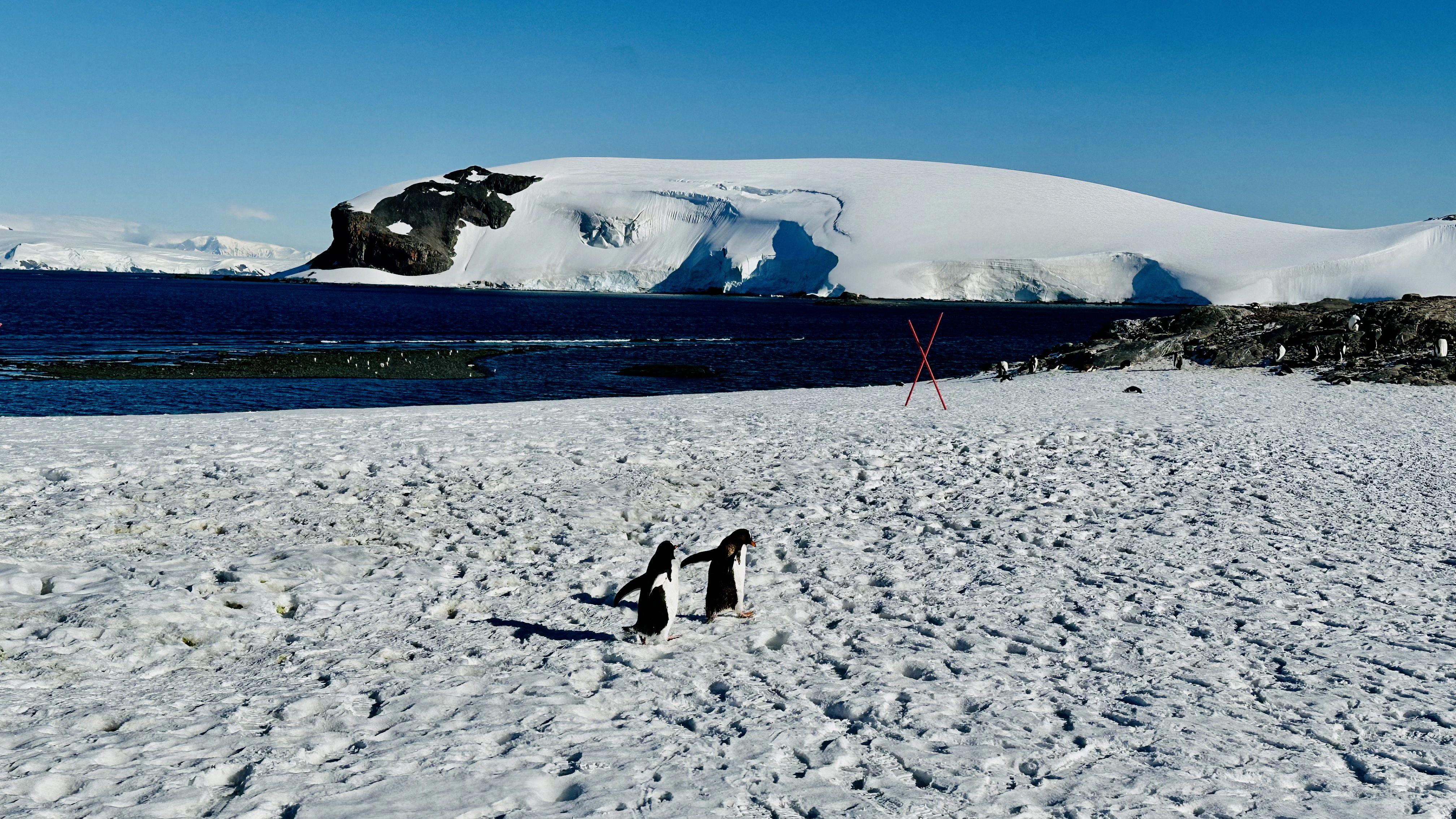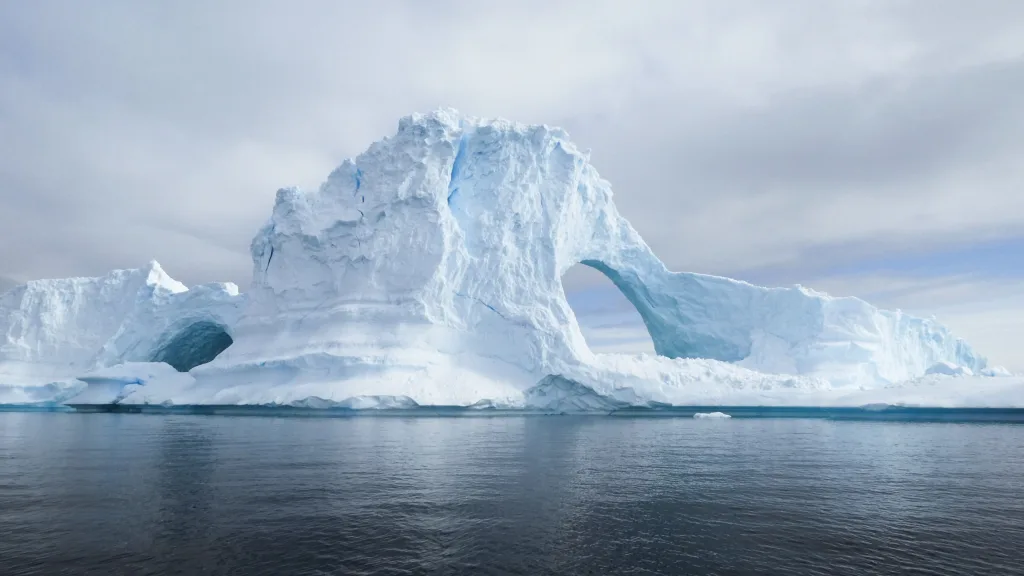Antarctica, the icy continent at the southernmost point of our planet, holds a mysterious allure for many. Its pristine beauty, harsh climate, and untouched landscapes make it a captivating destination. However, despite its appeal, Antarctica remains off-limits to most, and for good reason. In this article, we will explore why access to this icy wilderness is restricted and the measures in place to protect its fragile ecosystem.
The Antarctic Treaty, signed by 12 countries in 1959, is the cornerstone of international governance in Antarctica. This landmark agreement was established to preserve the continent for scientific research and to prevent any military or territorial disputes. Over the years, the treaty has garnered significant international support, with 55 countries now being party to its provisions.
One of the primary reasons for restricting access to Antarctica is to safeguard its delicate environment. The continent hosts a unique ecosystem, characterized by extreme cold, strong winds, and limited precipitation. This harsh environment has allowed for the evolution of specialized species, many of which are found nowhere else on Earth. To maintain the integrity of this fragile ecosystem, strict regulations are in place to minimize human impact.
One such regulation prohibits the removal of any natural or man-made materials from Antarctica. This includes rocks, feathers, bones, eggs, and even traces of soil. This ban ensures that the continent’s delicate balance remains undisturbed, allowing for ongoing scientific research and the preservation of its natural heritage. Additionally, taking man-made items could inadvertently remove crucial research equipment or disturb ongoing experiments.
Furthermore, the Antarctic Treaty System requires that anyone present in Antarctica, be it tourists, military personnel, or scientists, obtain a permit from a Treaty Party. These permits help regulate and control the number of individuals present on the continent at any given time, ensuring that human activities are carefully managed. This allows for the protection of sensitive areas and the prevention of overcrowding that could harm the environment.
In addition to the restrictions on material removal and requiring permits, the Antarctic Treaty also prohibits any military activity, nuclear testing, and the disposal of radioactive waste on the continent. These regulations are in place to maintain Antarctica as a peaceful and demilitarized zone, free from any potential conflicts or threats to its unique environment.
While the restrictions on accessing Antarctica may seem strict, they are vital for the preservation of this pristine wilderness. By limiting human activity and protecting the continent’s fragile ecosystem, we can continue to learn from Antarctica and gain insights into our planet’s past, present, and future.
Antarctica is off-limits to most due to its unique and fragile environment. The Antarctic Treaty and its regulations ensure that human activities are carefully managed, allowing for ongoing scientific research and the protection of this pristine wilderness. By respecting these restrictions, we can continue to appreciate Antarctica’s beauty and better understand our planet’s intricate workings.
What Is Restricted In Antarctica?
In Antarctica, there are strict regulations regarding what can be taken or removed from the continent. The restrictions apply to both natural and man-made materials. Here is a comprehensive list of items that are restricted in Antarctica:
Natural Materials:
1. Rocks: It is prohibited to collect rocks or geological samples from Antarctica. This includes any type of rock or related materials such as minerals or gemstones.
2. Feathers: Taking feathers or any other parts of birds or other animals is strictly forbidden. This includes feathers found on the ground or in nests.
3. Bones: Collecting bones, whether they belong to land animals or marine creatures, is not allowed. This includes fossilized bones.
4. Eggs: Taking eggs of any species, whether they are intact or broken, is prohibited.
5. Biological Material: Any kind of biological material, such as soil, plants, or microorganisms, cannot be taken from Antarctica. This also includes any traces of soil or plant matter found on clothing or equipment.
Man-made Materials:
1. Research Equipment: Taking any equipment used for scientific research is completely banned. This is to ensure that valuable research tools are not accidentally removed from the continent.
2. Historical Artifacts: Collecting or removing historical artifacts, including items left behind by explorers, is strictly prohibited. These artifacts are considered part of Antarctica’s cultural heritage and must be preserved in their original locations.
It is important to note that these restrictions are in place to protect the delicate ecosystem of Antarctica and to preserve its scientific and historical value. Violating these regulations can result in serious consequences, including fines and legal action.

When Did Antarctica Become Restricted?
Antarctica became restricted through the implementation of the Antarctic Treaty System. This international treaty was opened for signature on December 1, 1959, and officially entered into force on June 23, 1961. The treaty was initially signed by 12 countries, and over time, its membership has grown to include 55 parties. The aim of the treaty is to establish a framework for the governance of Antarctica and preserve the continent for peaceful and scientific purposes.
As part of the Antarctic Treaty System, the treaty sets forth various provisions to regulate human activities in Antarctica. One significant aspect is the prohibition of any military activity, nuclear testing, and the disposal of radioactive waste on the continent. It also prohibits any territorial claims to Antarctica, ensuring its status as a demilitarized and politically neutral zone.
The treaty further established the principles of freedom of scientific investigation and cooperation among signatory nations. It encourages the exchange of scientific data, information, and personnel, promoting international collaboration in research and exploration of Antarctica.
Additionally, the treaty imposes environmental protections to preserve the unique and delicate Antarctic ecosystem. It designates Antarctica as a natural reserve, requiring all activities to be conducted with minimal impact on the environment. This includes regulations on waste disposal, wildlife conservation, and the prevention of pollution.
Antarctica became restricted through the implementation of the Antarctic Treaty System, which entered into force on June 23, 1961. This treaty aims to govern the continent, promote scientific cooperation, and protect the environment. Its provisions prohibit military activities, territorial claims, and nuclear testing, ensuring Antarctica remains a peaceful and scientifically focused region.
Can You Go To Antarctica Without Permission?
You cannot go to Antarctica without permission. The Antarctic Treaty, which governs activities in Antarctica, requires individuals to obtain an appropriate permit from a Treaty Party in order to visit the continent. This applies to tourists, military personnel, and scientific researchers alike.
Here are some key points to note:
1. The Antarctic Treaty: The Antarctic Treaty is an international agreement that regulates human activity in Antarctica. It was signed in 1959 and currently has 54 parties, including countries like the United States, Australia, and Russia.
2. Permit requirement: The treaty mandates that anyone wishing to visit Antarctica must obtain a permit from a Treaty Party. This permit ensures that visitors adhere to certain guidelines and regulations to protect the environment and wildlife of Antarctica.
3. Types of permits: There are different types of permits depending on the purpose of the visit. Tourist permits are issued for recreational visits, while scientific research permits are required for researchers conducting studies in Antarctica. Additionally, military personnel may also need permits if they are engaged in military activities in the region.
4. Treaty Party authorization: Each Treaty Party has its own process for issuing permits. Generally, individuals or organizations interested in visiting Antarctica need to contact their respective national Antarctic program or relevant government agency to inquire about the permit application process.
5. Environmental protection: The permit system helps to ensure that visitors to Antarctica adhere to strict environmental guidelines. These guidelines are designed to minimize human impact on the fragile Antarctic ecosystem and protect the continent’s unique biodiversity.
6. Consequences of non-compliance: Engaging in activities in Antarctica without the necessary permits can result in legal consequences, including fines and other penalties. It is important to respect the regulations set forth by the Antarctic Treaty to maintain the ecological integrity of the region.
While the Antarctic Treaty does not outrightly prohibit individuals from visiting Antarctica, it does require the obtainment of a permit from a Treaty Party. This permit ensures that visitors adhere to guidelines designed to protect the continent’s environment and wildlife. It is essential to follow the proper procedures and obtain the necessary authorization before planning a visit to Antarctica.
Why Can’t You Fly Over Antarctica?
Flying over Antarctica is not a common practice due to several reasons:
1. Lack of airports: Antarctica is an uninhabited continent with no commercial airports or significant infrastructure. There are only a few research stations scattered across the continent, which are not equipped for commercial flights. As a result, there are no established flight paths or air traffic control systems in place.
2. Harsh weather conditions: Antarctica is known for its extreme weather conditions, including strong winds, low temperatures, and blizzards. These conditions can make flying over the continent extremely dangerous and risky. The severe cold can affect the aircraft’s performance and potentially damage its equipment.
3. Remote location: Antarctica is situated far away from any major flight routes or populated areas. Flying over Antarctica would require significant detours and extra fuel, making it economically unviable for airlines. There is simply no practical reason or demand for commercial flights over this desolate continent.
4. Environmental concerns: Antarctica is a fragile and pristine environment that is protected by international agreements. The Antarctic Treaty System, which includes the Protocol on Environmental Protection, prohibits any activity that may have a negative impact on the continent’s ecosystem. This includes restrictions on air traffic to minimize pollution and disturbance to wildlife.
It is worth noting that while flying over Antarctica is not prohibited, there are strict regulations and guidelines in place to ensure the preservation of this unique and fragile environment. These regulations are enforced to maintain the continent’s pristine nature and scientific research activities.

Conclusion
Antarctica is a unique and remarkable continent that holds immense scientific and environmental importance. It is governed by the Antarctic Treaty System, a treaty that aims to preserve the continent’s pristine nature and promote peaceful cooperation among nations. Antarctica is not only a land of extreme cold and harsh conditions, but it is also home to a diverse range of wildlife, including penguins, seals, and whales.
The continent’s fragile ecosystem is highly sensitive to human activities, which is why strict regulations are in place to protect it. Taking anything from Antarctica, whether it be natural or man-made, is strictly prohibited. This includes rocks, feathers, bones, and even traces of soil. The ban also extends to any biological material and research equipment, as they may have scientific value.
Despite these regulations, tourists, military personnel, and scientific researchers are allowed to visit Antarctica with the appropriate permits. However, flying over Antarctica is not common as it is not on the way to any airports and is not an independent country. Therefore, it is not considered a no-fly zone.
Antarctica’s significance goes beyond its natural beauty. Its ice sheets hold valuable information about Earth’s climate history and play a crucial role in regulating global climate patterns. Research conducted in Antarctica helps scientists understand climate change and its potential impacts on our planet.
Antarctica is an awe-inspiring continent that is protected by international agreements to ensure its preservation for future generations. Its unique environment and scientific importance make it a truly remarkable place on Earth.
